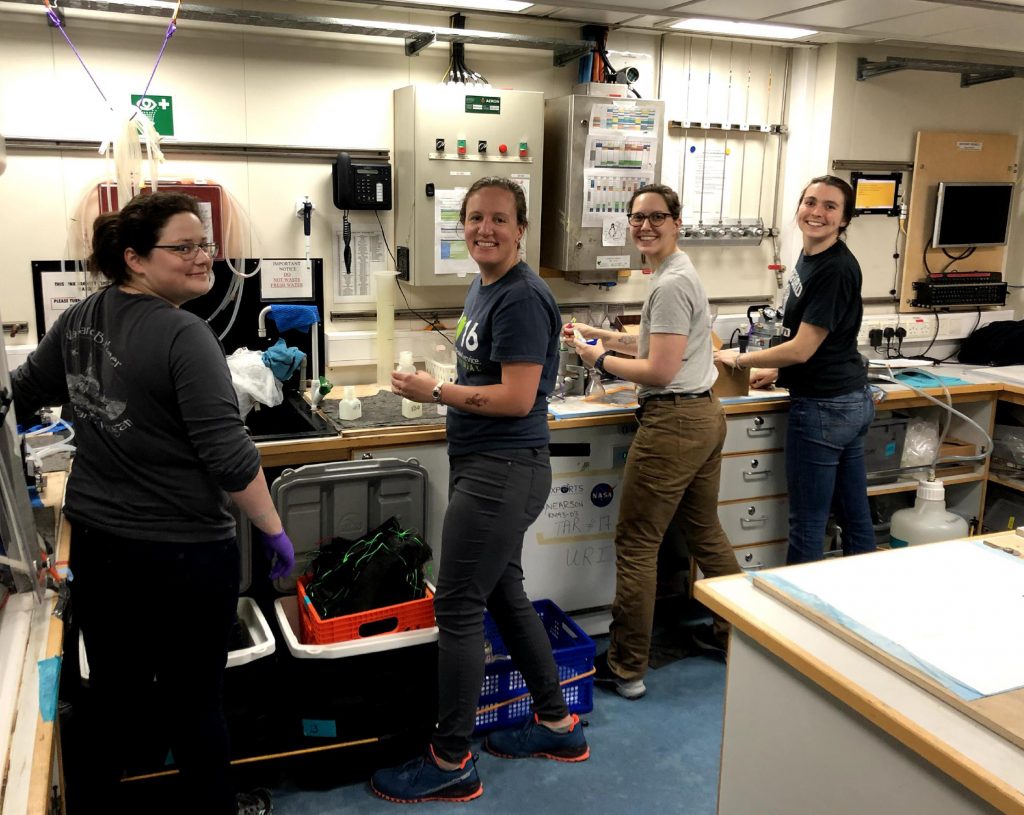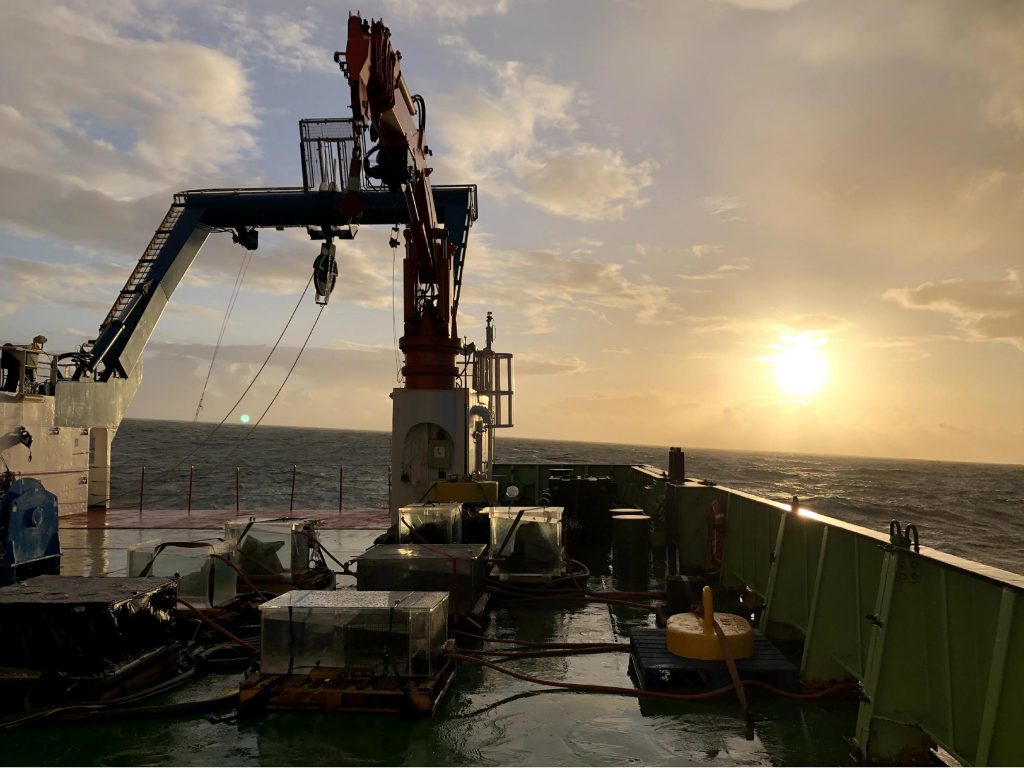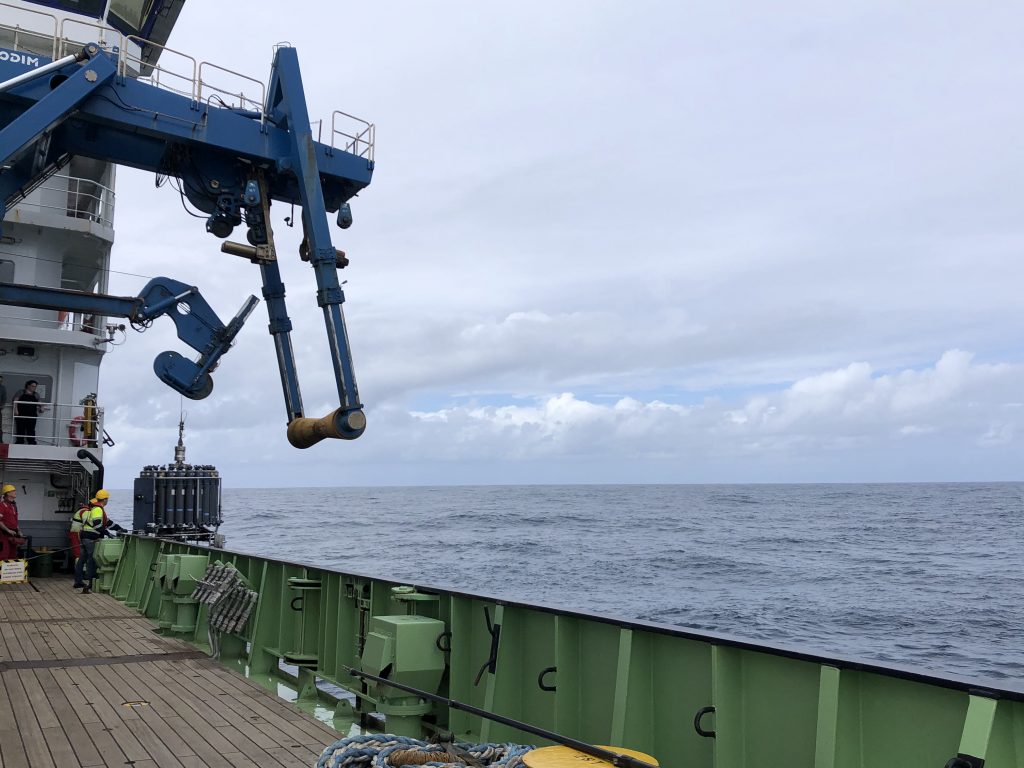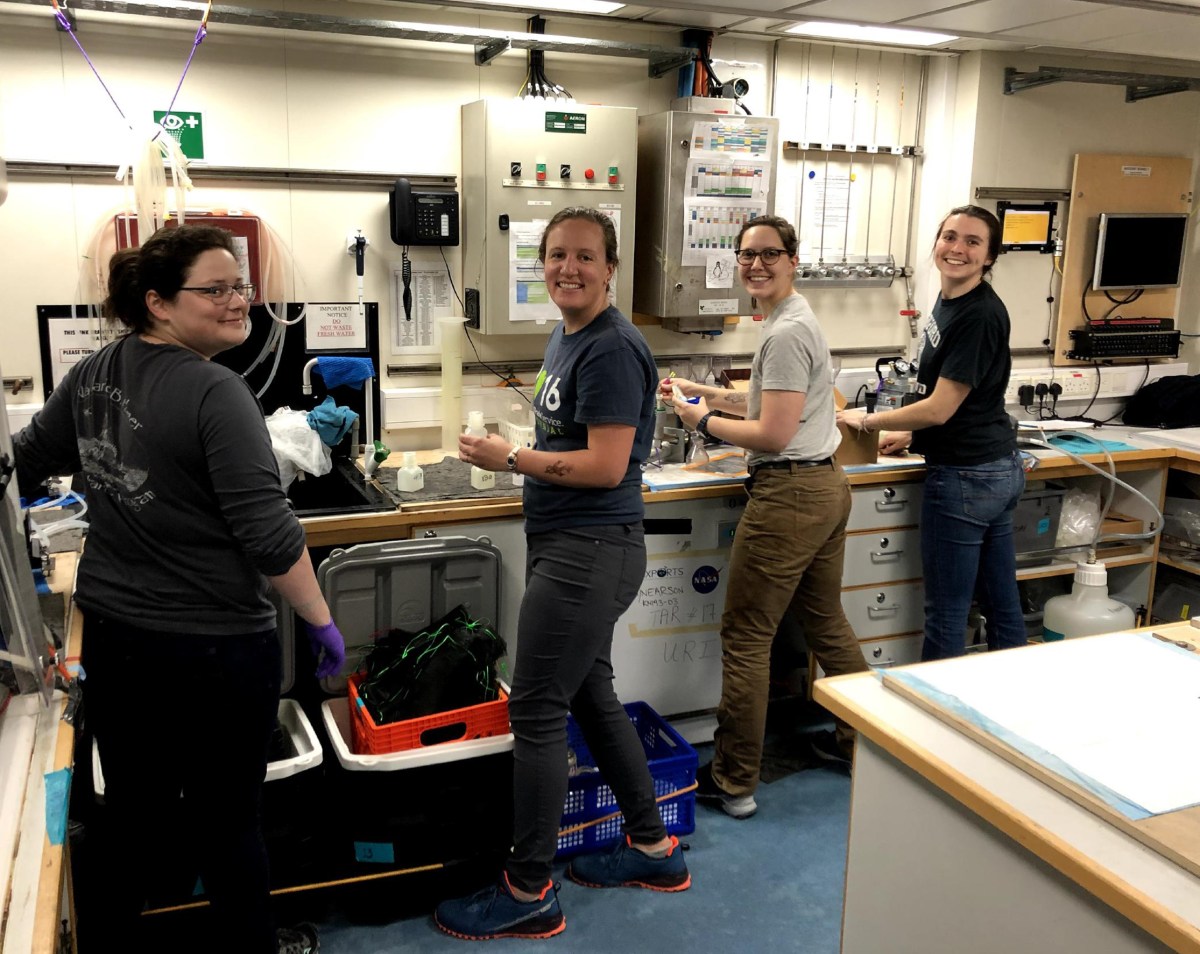By Diana Fontaine, Ph.D. Candidate at the University of Rhode Island Graduate School of Oceanography / NORTHERN ATLANTIC OCEAN /
We have about one more week of full science fun left in the North Atlantic NASA EXPORTS campaign. It has certainly been a wild ride at sea given that we’ve experienced about four storms to date. However, even with the weather days, we have still accomplished an impressive amount of science.
My name is Diana Fontaine and I have been working with team grazer, alongside Heather McNair (post-doctoral researcher), Laura Holland (post-doctoral researcher) and Erin Jones (Ph.D. student). Our role in the project is to quantify microzooplankton grazing on phytoplankton. Microzooplankton are single-celled organisms that play an important role in the transfer of energy in the ocean. They are a key link between phytoplankton, the free-floating plants and algae of the sea, and larger zooplankton. Many species of zooplankton eat phytoplankton, which transfers energy to higher trophic levels. Every day, microzooplankton eat about 70 percent of the daily phytoplankton growth in the ocean. This is quite a huge loss factor of phytoplankton! Thus, understanding microzooplankton grazing rates has large ecological importance for carbon cycling in the ocean.

Measuring microzooplankton grazing involves many, many hours of pouring water and filtering. Sometimes I feel like all we do is pour water from one place to another. But so it goes as a plankton ecologist! The basis of these rates comes from measuring chlorophyll, a green pigment in phytoplankton cells that is used in photosynthesis, at the beginning and end of incubation experiments. But first we must collect the water used in our experiments from the CTD Rosette, a device that we use to measure seawater properties like conductivity, temperature and depth as well as collect seawater samples. After collection, we incubate the water in tanks on the back deck of the ship. These tanks are covered in various layers of mesh screens to imitate the light levels at different depths in the ocean. The microzooplankton hang out in the tanks for about 24 hours to give the microzooplankton a chance to have a feast on the growing phytoplankton.

Once time is up for the experiment, we again filter more water – this time to observe how much chlorophyll increased or decreased during the incubation. There are some details to these experiments that I won’t describe here. However, overall if chlorophyll increased during the incubation, then there was more phytoplankton growth than the microzooplankton were able to graze. And vice versa – if there is less chlorophyll at the end of the incubation, then that mighty microzooplankton had quite the snack! On some days we have observed happy snack time for the microzooplankton,while on others there didn’t seem to be much grazing happening at certain depths in the water column. We’re looking forward to examining these rates in greater detail once back on land.

For the remainder of the cruise, we plan to carry out a couple more grazing experiments. Both the length of this cruise and the periodic storms have allowed us to collect data under varying environmental conditions. This will make for an exciting data analysis adventure, especially when we place our results in the framework of the broader NASA EXPORTS project.
Once this next week of science is complete, we will pack up all of our gear and samples for shipment back to the United States. While it will be sad to leave our floating home for the past month or so, I look forward to the data analysis, collaboration, and writing up our results back on land. Throughout this whole experience, we have been incredibly lucky to have the helpful support of the NASA Project Office as we navigated the traveling, quarantining, and sailing during the pandemic. It has certainly been a rewarding experience to join along for the ride.

